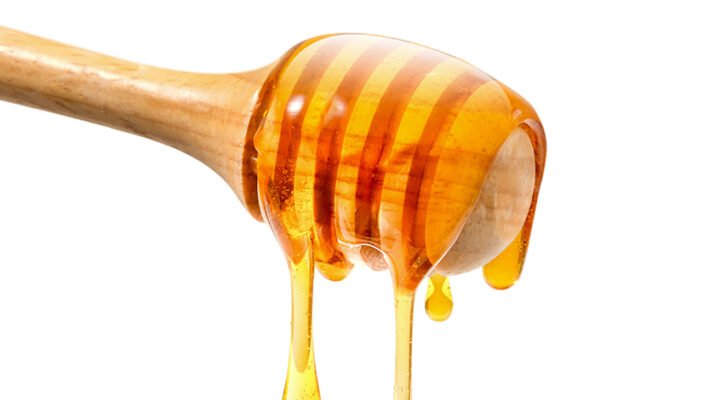There’s a difference between raw honey and the kind typically found in stores
By Deborah Jeanne Sergeant
Stirred into tea, spread on toast, blended into a smoothie or drizzled on plain yogurt, honey provides sweet flavor to meals. In addition, the ancient sweetener provides many other benefits.
“Honey is filled with antioxidants and can boost your overall health and immune system,” said
Jillian Barrett, co-owner of BeeKind, LLC, a home décor and local goods shop in Syracuse that carries local honey from Hiwire Honeybees in LaFayette. “Honey has antibacterial and antiseptic properties making it beneficial to be ingested or be used topically.”
Barrett recommends it for sore throats, as does The World Health Organization and American Academy of Pediatrics. Compared with medicinal-tasting cough syrup, honey is pleasanter for children to take. However, children less than 1 year old should not ingest honey because of the risk of botulism because of traces of bacteria in honey. It poses no risk for children older than 1 or pregnant women.
Raw honey and the type typically found in grocery stores are different, as the latter is pasteurized. Raw honey still has pollen traces in it and that has been found beneficial. Buying honey explicitly labeled as raw can ensure those properties are intact.
“Local, raw honey, like that from Hiwire Honeybees, can help with seasonal allergies,” Barrett said. “This is due to ingesting honey containing pollen found in your area making you less sensitive to it.”
Though honey does offer many benefits, since it is a sweetener, eating it in moderation is important.
Honey’s topical uses have been well-known for millennia—and it is still in use that way today.
Raw manuka honey is said to be especially beneficial for pressure ulcers and wounds because of its ability to promote healing. It is made by bees gathering nectar from manuka plants, which are native to New Zealand.
“Honey does have some significant therapeutic benefits for the skin,” said Ramsey Farah, dermatologist with Farah Dermatology & Cosmetics in Syracuse. “In our practice, we often use it for chronic wounds and a part of our treatment strategies for healing.”
In addition to its wound healing capabilities, honey is gentle. In fact, Nancy Samuel, RN and managing partner at Sedora Spa in Syracuse, said some of her spa’s products contain honey for its ability to calm and hydrate the skin.
“It’s definitely great for healing and anti-inflammatory properties,” she said.
So how is honey made?
• From Bee
Honey starts as flower nectar collected by bees, which gets broken down into simple sugars stored inside the honeycomb. The design of the honeycomb and constant fanning of the bees’ wings causes evaporation, creating sweet liquid honey. Honey’s color and flavor vary based on the nectar collected by the bees. For example, honey made from orange blossom nectar might be light in color, whereas honey from avocado or wildflowers might have a dark amber color.
• To Hive
On average, a hive will produce about 65 pounds of surplus honey each year. Beekeepers harvest it by collecting the honeycomb frames and scraping off the wax cap that bees make to seal off honey in each cell. Once the caps are removed, the frames are placed in an extractor, a centrifuge that spins the frames, forcing honey out of the comb.
• To Home
After the honey is extracted, it’s strained to remove any remaining wax and other particles. Some beekeepers and bottlers might heat the honey to make this process easier, but that doesn’t alter the liquid’s natural composition.
After straining, it’s time to bottle, label and bring it to you. It doesn’t matter if the container is glass or plastic or if the honey is purchased at the grocery store or farmers’ market. If the ingredient label says, “pure honey,” nothing was added from bee to hive to bottle.

